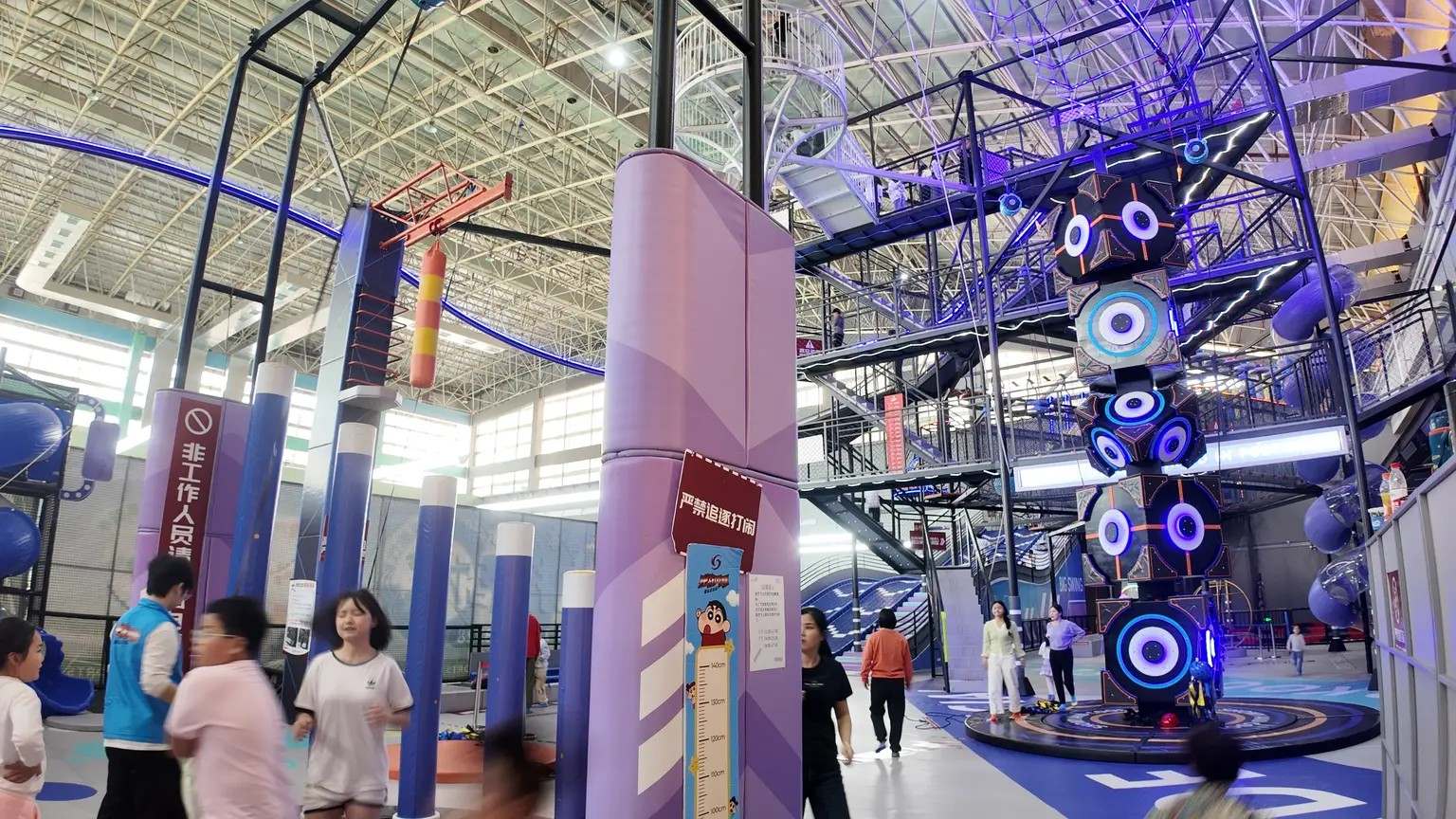Indoor Playground Equipment Market Expert Analysis Profit Models & Future Opportunities Guide
摘要:
Indoor Playground Equipment Market Expert Analysis: Profit Models & Future Opportunities GuideIn
Indoor Playground Equipment Market Expert Analysis: Profit Models & Future Opportunities Guide
In today’s rapidly evolving family entertainment landscape, indoor playgrounds have emerged as a cornerstone of commercial success, offering year-round entertainment opportunities. The global indoor playground equipment market is experiencing unprecedented growth, projected to reach $4.8 billion by 2026 with a compound annual growth rate of 6.8%. This expansion is driven by increasing disposable incomes, growing focus on child development through play, and the rise of experiential retail concepts. For commercial investors and venue operators, this represents a significant opportunity—but success requires more than just installing equipment. It demands strategic planning, market insight, and a partner who understands both the technical and business aspects of creating profitable play spaces. As the industry becomes more competitive, choosing the right partner becomes crucial to differentiate your offering and maximize return on investment. MIZONE brings over a decade of expertise in translating market trends into successful, revenue-generating playground solutions that captivate children and satisfy investors.
Understanding the Indoor Playground Market Growth Dynamics
The indoor playground industry is undergoing a remarkable transformation, driven by shifting consumer preferences and innovative business models. Post-pandemic, families are prioritizing safe, engaging entertainment options that offer both fun and developmental value. Market research indicates a 23% increase in family entertainment center visits compared to pre-2020 levels, with indoor playgrounds emerging as the most popular destination category. This growth is fueled by several key factors: urbanization leading to limited outdoor spaces, increasing awareness of the importance of active play for child development, and the integration of educational elements into play environments.
Demographic shifts also contribute significantly to market expansion. The rising middle class in emerging economies has increased demand for quality play experiences, while in developed markets, the "experience economy" has driven operators to create more immersive, themed environments. Additionally, the corporate sector is recognizing indoor playgrounds as valuable amenities, with shopping malls, restaurants, and hotels increasingly incorporating play areas to attract family customers and increase dwell time.
Consumer expectations have evolved beyond basic play structures to include interactive elements, sensory experiences, and age-appropriate challenges. Modern indoor playgrounds now integrate technology, custom themes, and multi-sensory experiences to create memorable destinations that encourage repeat visits and generate positive word-of-mouth marketing.

Key Profit Models in the Indoor Playground Industry
Successful indoor playground operations leverage diverse profit models tailored to their specific market and location. Understanding these models is essential for investors seeking to optimize revenue streams and achieve sustainable profitability.
The most common approach is the pay-per-play model, which offers flexibility for casual visitors and works well in high-traffic locations like shopping centers. This model typically generates immediate revenue but requires consistent foot traffic to maintain profitability. Operators can enhance this model through tiered pricing strategies, offering premium experiences or longer play times at discounted rates to increase average customer spend.
Membership/subscription models have gained popularity as a way to secure recurring revenue and build customer loyalty. By offering monthly or annual passes, operators can create predictable cash flow while encouraging frequent visits. Successful membership programs often include additional benefits such as exclusive event access, birthday party discounts, or merchandise coupons to increase perceived value and retention rates.
Ancillary revenue streams significantly boost overall profitability and can account for 30-40% of total revenue in optimized operations. These include birthday party packages, which typically yield higher margins than standard admission; retail sales of branded merchandise, toys, and refreshments; and educational program offerings such as art classes, fitness sessions, or developmental workshops. Strategic partnerships with local businesses for cross-promotion can also generate additional income while enhancing the customer experience.
Corporate partnerships and venue rental represent underutilized profit opportunities for many operators. Indoor playgrounds can be rented for corporate events, team-building activities, or private functions during off-peak hours, maximizing space utilization and generating revenue during traditionally slow periods. Some forward-thinking operators have even developed co-working spaces within larger play centers, catering to remote-working parents who want to be productive while their children play in a safe environment.

Critical Success Factors and Risk Mitigation Strategies
Achieving profitability in the indoor playground industry requires careful attention to critical success factors and proactive risk management. The foundation of a successful operation begins with strategic location selection, which should consider foot traffic patterns, demographic characteristics, parking availability, and proximity to complementary businesses. Research indicates that locations near family-oriented retail, dining establishments, or residential areas tend to perform best, as they benefit from existing family traffic and convenience factors.
Thoughtful design and equipment selection directly impact customer satisfaction, repeat visitation, and operational efficiency. The ideal playground design balances visual appeal, developmental value, and operational practicality. Equipment should be selected based on the target age demographic, with distinct zones for different age groups to maximize engagement and safety. Investing in high-quality, durable equipment reduces long-term maintenance costs and minimizes downtime, while incorporating unique, custom elements creates a competitive advantage and enhances memorability.
Effective operational management is essential for maintaining profitability and ensuring customer satisfaction. Key operational considerations include staffing levels and training, cleaning protocols, maintenance schedules, and customer service standards. Implementing robust booking and point-of-sale systems can streamline operations while providing valuable data insights into customer behavior and preferences. Successful operators also prioritize staff training to ensure safety supervision, emergency response capabilities, and exceptional customer service.
Risk mitigation strategies should address the industry’s unique challenges, including safety liability management, seasonal demand fluctuations, and increasing competition. Comprehensive safety protocols, regular equipment inspections, and thorough staff training minimize accident risks and liability exposure. Diversifying revenue streams and developing targeted marketing campaigns for traditionally slow periods can help offset seasonal fluctuations. To stand out in competitive markets, operators should focus on creating unique themed experiences, exceptional customer service, and strong community engagement to build brand loyalty and differentiate their offering.
The MIZONE Advantage: A Comprehensive Solution from Concept to Completion

Guangdong MIZONE Industrial Co., Ltd was formerly known as Foshan MIZONE Amusement Equipment Co., LTD., established in 2014. We are located at No. 2, Jiye South Lane, Langbian Village, Shiqi Town, Panyu District, Guangzhou. We are an innovative amusement equipment manufacturing enterprise that integrates design, development, sales, production, engineering, and service. We have more than 10,000 square meters of standardized plants, a large number of professional manufacturing equipment and more than 100 experienced design, production, engineering and technical personnel. At the same time, we have established a complete quality assurance system to ensure that our products are safe, reliable and of good quality.
MIZONE’s Strategic Approach to Maximizing Market Opportunities
MIZONE’s comprehensive approach to indoor playground development positions our partners for success in today’s competitive market. Our market-driven design philosophy ensures that every project incorporates the latest trends while addressing the specific needs of the target demographic and location. By combining extensive market research with creative design expertise, we create play environments that not only attract customers but also encourage repeat visits and positive word-of-mouth promotion.
Our data-informed equipment selection process helps investors optimize their budget allocation for maximum return on investment. We provide detailed analysis of equipment popularity, durability, maintenance requirements, and revenue-generating potential, ensuring that each element contributes to the overall profitability of the playground. This strategic approach helps our partners avoid common pitfalls such as over-investing in low-impact elements or underestimating the importance of certain attractions.
MIZONE’s turnkey solutions streamline the development process from concept to completion, reducing project timelines and minimizing stress for investors. Our integrated team handles every aspect of the project, including initial feasibility studies, design development, equipment manufacturing, installation, staff training, and post-opening support. This comprehensive approach ensures consistency in quality and vision while allowing investors to focus on their core business operations.
Our commitment to long-term partnership extends beyond project completion, with ongoing support services that help operators adapt to changing market conditions and evolving customer preferences. We provide regular market updates, operational performance analysis, and equipment upgrade recommendations to help our partners stay ahead of industry trends and maintain a competitive edge. This collaborative approach has resulted in an impressive track record of successful projects across diverse markets, with 92% of our clients reporting above-industry-average profitability within their first year of operation.
Investing in an indoor playground represents significant potential for financial returns and community impact, but success depends on strategic planning, market insight, and quality execution. By partnering with MIZONE, investors gain access to a wealth of industry expertise, innovative design capabilities, and comprehensive support services that maximize their chances of success. Our proven approach combines creative design with sound business strategy to create play environments that captivate children, satisfy parents, and generate sustainable profits.
As the indoor playground market continues to evolve, MIZONE remains committed to innovation and excellence, helping our partners navigate industry changes and capitalize on emerging opportunities. We invite you to contact our team of experts to discuss how we can help transform your vision into a thriving, profitable reality. Whether you’re exploring your first indoor playground investment or looking to upgrade an existing facility, MIZONE provides the expertise, resources, and support needed to achieve your business goals in this dynamic and growing industry.






